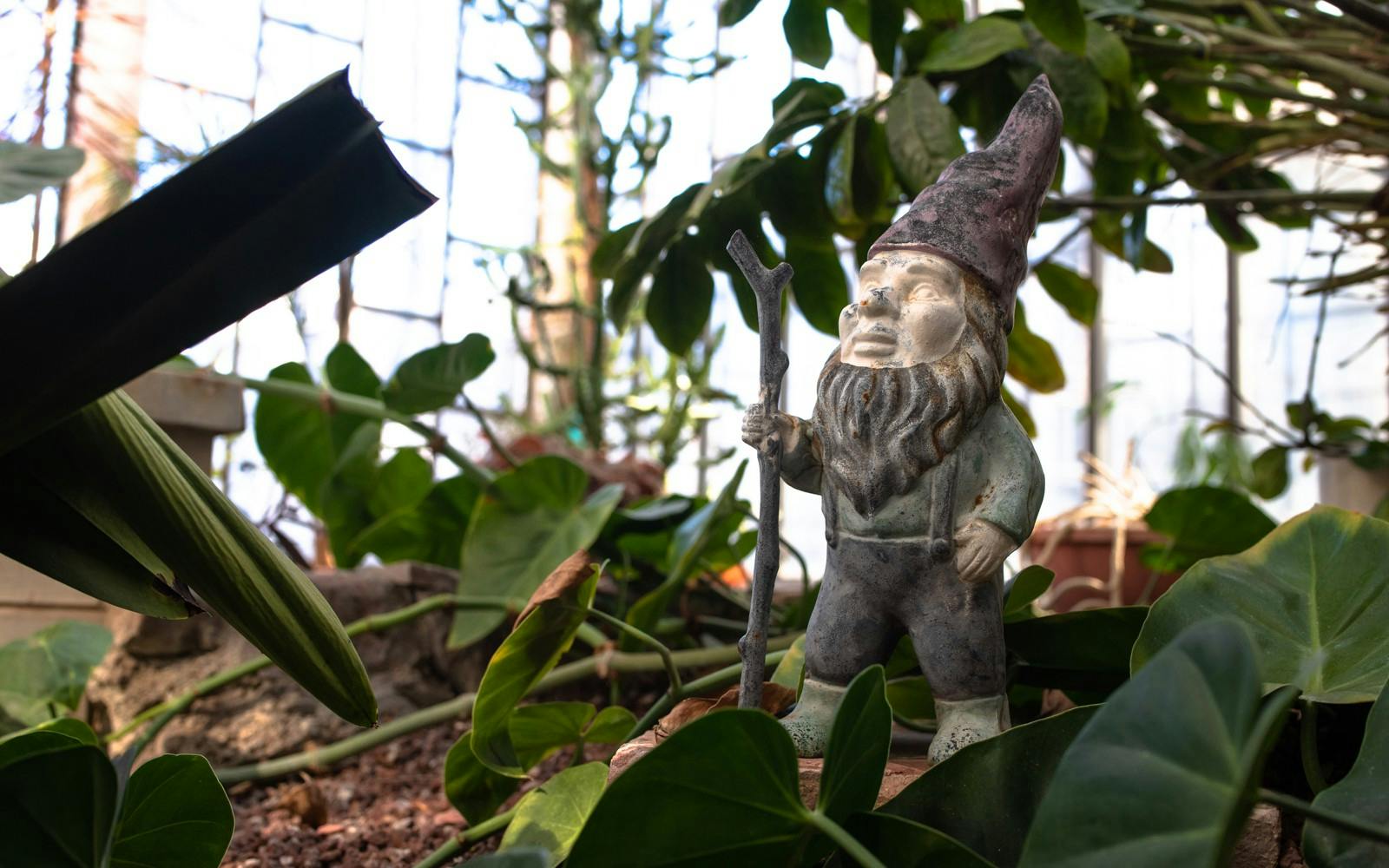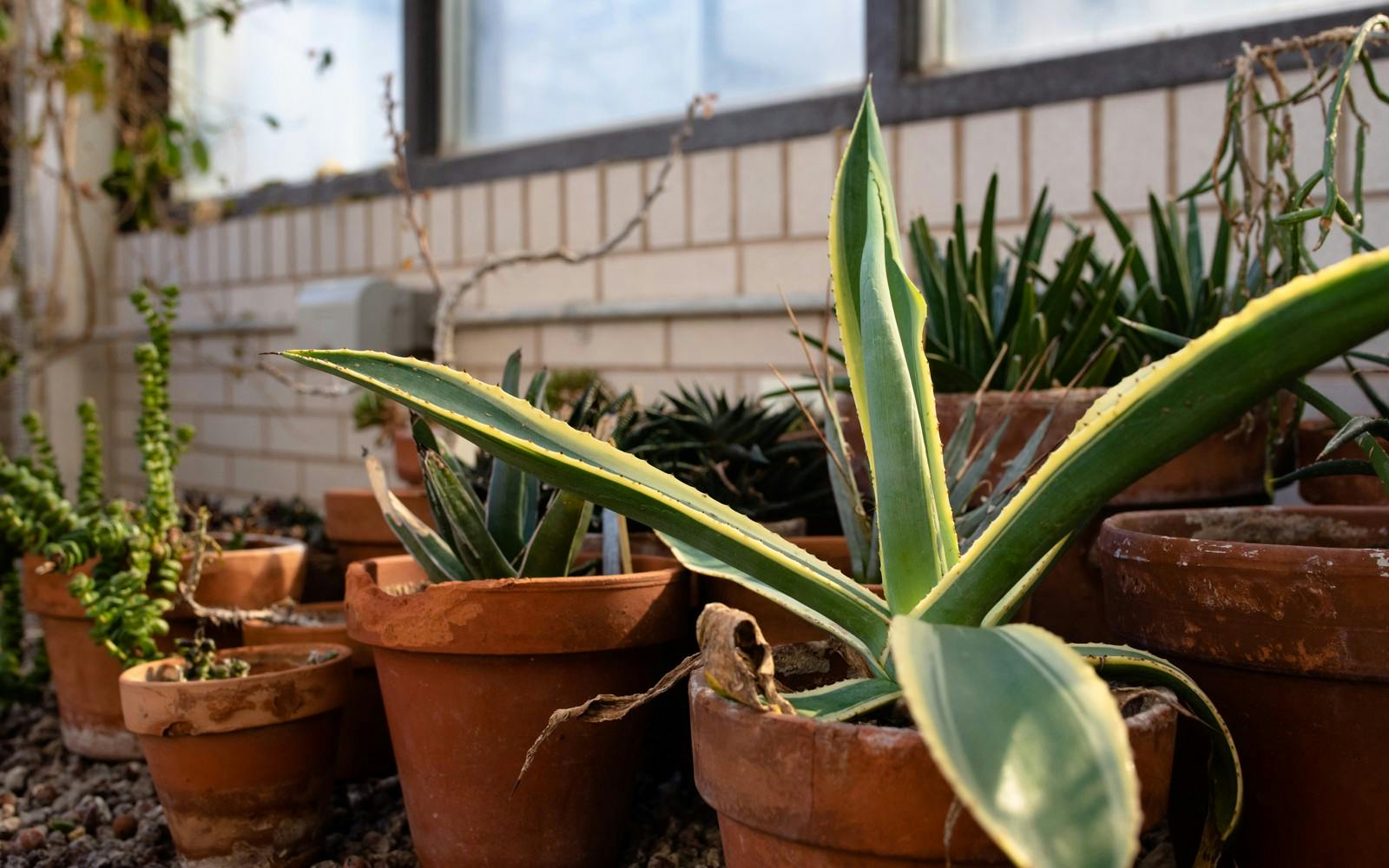Castetter Hall at the University of New Mexico is home to several greenhouses, utilized for everything from research to serving as a peaceful oasis on campus for students to gather and study, according to greenhouse manager Wesley Noe, who cares for the public greenhouse and teaching labs, along with providing support for the researchers.
Alongside faculty, graduate students are also able to use the greenhouse for their research projects, according to Noe.
“I think we all have a fun time whenever we work together. It's kind of a unique thing that people get to do here; even in the department, most people are just working in the lab,” Noe said. “For those 10 select grad students that do get to have an experiment in the greenhouse it’s just a cool experience to have for them.”
One of the graduate students currently researching in the Whitney lab, adjacent to the public greenhouse, is Maya Shamsid-Deen. She is currently researching phenotypic plasticity in mustard plants. Phenotypic plasticity is the ability for plants that have the exact same DNA, called “plastic,” to exhibit variation based upon the conditions they grow in rather than genetic variation.
“Plastic is when they're clones, so their genetic information is all the same. But depending on your treatment (as a plant), depending on the environment you're experiencing, you will look different. So you might grow really tall. And that would be great, if you're trying to get more light. If you're growing under competition, maybe you're going to flower a little bit later, versus someone who doesn't have that competition,” Shamsid-Deen said.
These tests are done also to understand how the recency of their introduction to their environment, specifically when the plants were introduced to the United States, will affect their plasticity. This means the greenhouse is instrumental to the research — the plants would not survive outside in the natural conditions in the state.
“I'm looking to see if there's a pattern between the populations that have a more recent history of colonization, them being more plastic versus those that haven't really been introduced to new areas that’ve kind of stayed in the same place the whole time,” Shamsid-Deen said.
Her experiment started when she traveled across the Southwest studying a shrub, and noticed variations in how it grew based upon the environment it lived in, leading her to discover a new variety of species. What is different about this experiment is the plants are all the same species, and this research is only feasible because of the greenhouse, which eliminates the variation that would be present in a field study.
“I can control their environment. So here, these plants actually grow on the East Coast, and some on the West Coast. They're not grown in New Mexico. And so the greenhouse allows you control so that you can really distinguish those patterns from the variation that you might have in a field study.,” Shamsid-Deen said.
This study is set to be completed in April, at which point they will begin analyzing the data. Shamsid-Deen hopes to gain an understanding through her research on how plants will survive the changing conditions caused by climate change.
“Under climate change, our plants are going to be dealing with a lot of variability. That could be in precipitation, that could be in temperature — they can look into it a lot of different ways. And so how are they going to cope with that variability?” Shamsid-Deen said.
Aside from research studies like Shamsid-Deen’s, there are also undergraduate projects that live in the teaching bay, which Noe takes care of.
Get content from The Daily Lobo delivered to your inbox
“And that's why the botany class is really great, because then the students get to learn … why do you need a greenhouse? What are the controls over lighting variation, or what have you — Why is all of that important?” Shamsid-Deen said.
The public greenhouse next door emphasizes community by being a place for students to study and from the plants that fill it, as many are donations from community members, according to Noe.
“I think it provides a lot to the students for space to rest in peace. So I think for the student body, that's super, super important,” Noe said.
Maddie Pukite is the managing editor at the Daily Lobo. They can be contacted at managingeditor@dailylobo.com or on Twitter @maddogpukite









